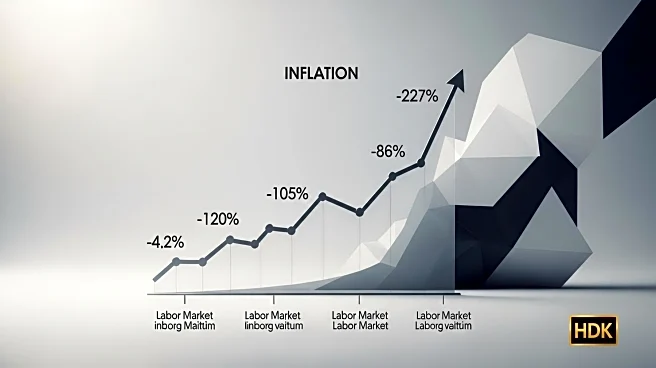What's Happening?
Wall Street is bracing for the upcoming week as recent jobs data indicates a weakening labor market. The latest nonfarm payrolls report has shown a downturn, prompting concerns about the economy's health. Investors are closely monitoring the bond market, with Treasury yields experiencing fluctuations. The 10-year U.S. Treasury yield recently dropped to its lowest level since April, following the jobs report. This has led to speculation about potential interest rate cuts by the Federal Reserve at its upcoming meeting. Despite these concerns, there is optimism about the stock market's resilience, particularly with the growth of artificial intelligence sectors.
Why It's Important?
The labor market's downturn is crucial as it impacts economic stability and investor confidence. A weakening labor market can lead to reduced consumer spending and slower economic growth. The potential interest rate cuts by the Federal Reserve are seen as a measure to stimulate the economy, but they also reflect underlying economic challenges. The bond market's response to these developments will be closely watched, as it influences equity markets and investment strategies. The situation underscores the delicate balance policymakers must maintain between fostering economic growth and managing inflation.
What's Next?
Investors will be focused on the upcoming inflation data, which could further influence the Federal Reserve's decisions on interest rates. The September Fed meeting is anticipated to address these economic concerns, with potential rate cuts on the agenda. Additionally, the federal budget deadline looms, adding another layer of complexity to the economic outlook. Market participants will be analyzing every piece of employment data for signs of recovery or further decline.












